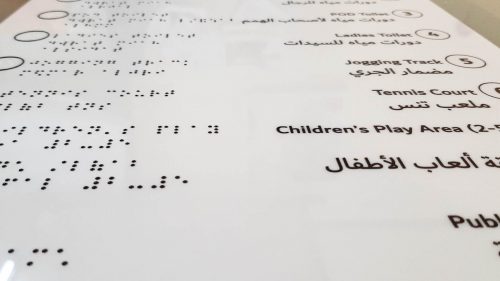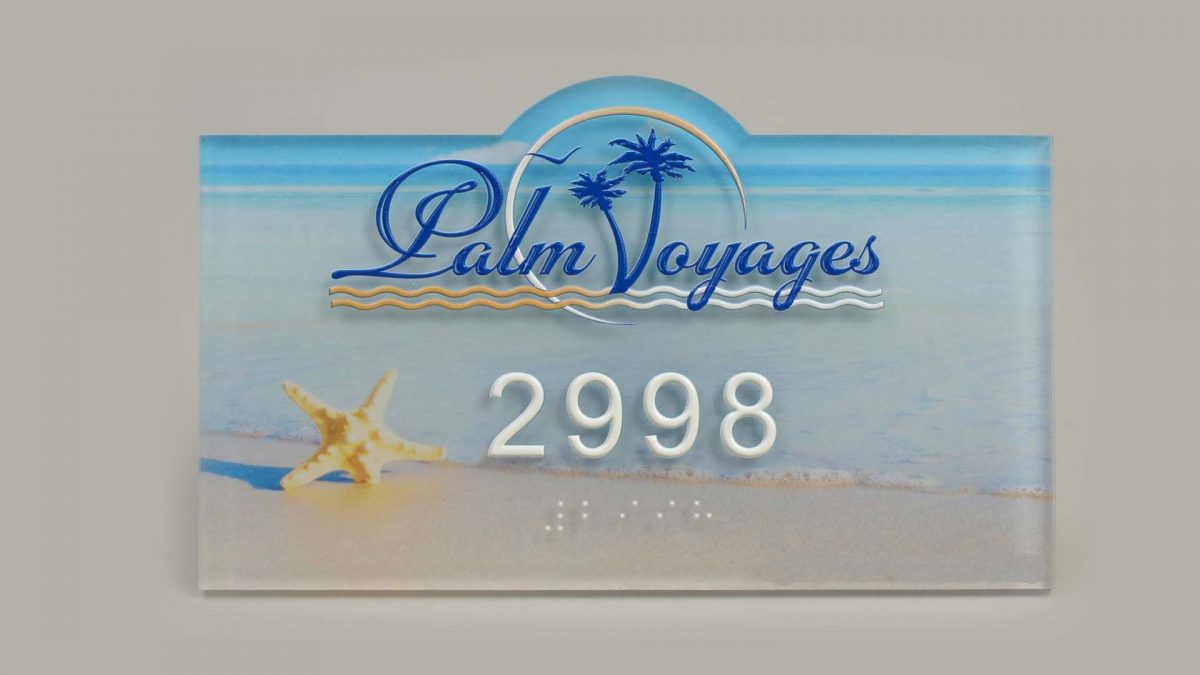Background & history:
Signs for blind people Dubai or, for that matter, blind people anywhere else in the world can trace their history to 1990. In that year, US President Mr. George H.W. Bush signed a historic law (Americans with Disabilities Act ADA) that provided easy and adequate access to physically and mentally challenged persons in public buildings and spaces. Braille signs became a cornerstone of that policy to help visually impaired persons navigate these public buildings. Failure to do so can result in legal action against the offenders and may result in penalties. Governments worldwide took a cue from this law and began implementing similar directives to help their differently-abled people.
Compliance with this law:
As respective countries started enacting these laws, their implementation became a real challenge. Public buildings and spaces are spread across cities, and it is an uphill task to follow this law in letter and spirit. But since the law has noble intentions and seeks to provide equal opportunity to access, use, and commute public facilities and accommodations, governments and rights bodies worldwide take particular interest in its implementation. Signs for blind people Dubai is also an ongoing process, and all the buildings, public utility centers, the transport system follow this law.
Which buildings require braille signs?
The provisions of the American disabilities act are applicable on the following buildings;
- Stores and shops
- Retail establishments
- Restaurants and bars
- Theaters
- Service establishments
- Recreation facilities
- Places of lodging
- Assembly areas
- Places of education
- Private museums
- Office buildings
- Warehouses
- Factories
- Condo buildings and Public areas of apartment
- Manufacturing plants
- Commercial spaces in private residences
- Other facilities whose operations affect commerce
Signs for blind people in Dubai should also get displays in all the places mentioned above.
Compliant ADA braille signs:

Material:
Materials with a thick texture, non-luminous finish are ideal for this purpose. Usually, wood, metal, and plastic are widely used for it.
Thickness:
The thickness of the material should be around 1/8”. The tactile lettering should be 1/32” thick.
Braille:
Braille should not be sharp, pointed, or flat. It should be in a dome shape. Barring proper names and abbreviations, it should be in lower case, and it should be shaped and sized according to the law.
Color:
There must be a contrast between the sign’s base and the text. For example, it could be light characters against a dark backdrop or vice versa.
Pictograms:
These are the elevated symbols on the sign. They should be 6” in their high field.
Letters:
The height of the letters should be between 5/8” and 2”. There must be a minimum space of 1/8” between the letters. Similarly, sign and braille should be precisely spaced as well.
If you have any queries about buying or manufacturing braille signs, contact Al-Rizq Advertising in Dubai. They are dealing with all kinds of braille designs. They have a team of professionals and ensure that the job is carried out expeditiously and to their best abilities.



